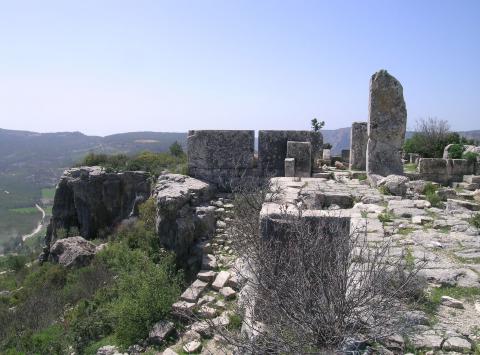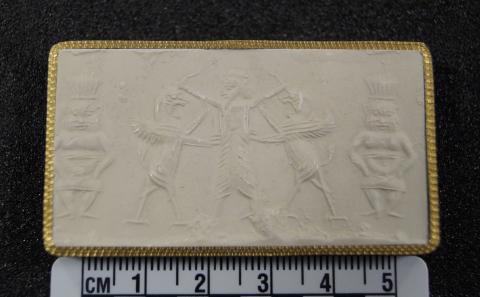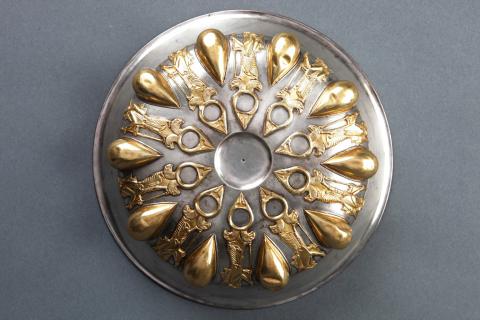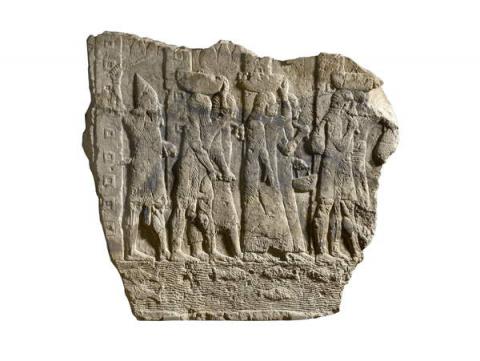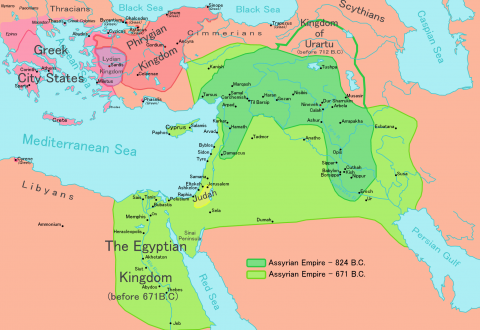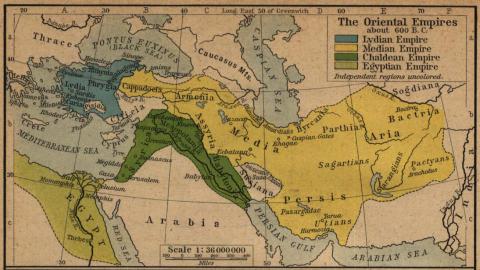The Achaemenid Empire: An Introduction
The sections below provide some historical background to the Near East in general and to our period specifically; it is a good idea to have a quick look through these ahead of the beginning of the course to familiarise yourself both with this historical background and also with how to use Cabinet.
Below are some recommendations of online reading that might be useful before the start of the course and a few items that will feature frequently on reading lists over the coming weeks:
General Resources:
Brosius, M. (2000; second edition, 2023) The Persian Empire from Cyrus II to Artaxerxes I (London). [This and Kuhrt 2007 present many of the sources that will appear throughout this module, with much useful discussion and directions to further reading].
Kuhrt, A. (2007) The Persian Empire: A Corpus of Sources from the Achaemenid Period (London).
Achemenet [the brainchild of Pierre Briant; contains a wealth of sources, translations, updates on developments in Achaemenid studies, and much more].
Iranica Online [this is an incredibly useful resource for looking up sites, peoples, historical figures, and most other things (even including an excellent article on belts) written by specialists and based at Columbia University].
Jacobs, B., Rollinger R. (2021) A Companion to the Achaemenid Persian Empire (Chichester) [Very large recent volume with many useful historical and thematic chapters on every aspect of the Empire by specialists]
Livius for the Mesopotamian chronicles [crucial evidence for our period, particularly the early years].
Pelagios [provides a searchable map of the ancient world linking sites to sources].
The Near East before the Achaemenids:
T. Cuyler Young Jr., ‘The Early History of the Medes and the Persians and the Achaemenid Empire to the Death of Cambyses’ in CAH 4.
A. Podany, The ancient Near East : A very short introduction (2013).
K. Radner, Ancient Assyria : A very short introduction (2015). [The first chapter “Introducing Assyria” is actually very handy as an overview of the immense history of Assyria in a few short pages].
The Achaemenid Empire:
P. Briant, ‘History of the Persian Empire 550-330 BC’ in Curtis and Tallis, Forgotten empire: The world of ancient Persia (2005) 12-16.
P. Briant, From Cyrus to Alexander: A history of the Persian Empire Tr. P. Daniels (2001).
[excellent detailed look at the Persian empire; the only downside is that it is quite long, but a very worthwhile investment if you have time].

The earliest written account of early Achaemenid history in Greek is that of Herodotus; however, one has to be very careful in using this to write history. For a start, Herodotus’ account is fundamentally literary in nature and his Achaemenid kings are important tools in the creation of a moral narrative. For a good demonstration of this idea – specifically in relation to the role of tyrants in the Herodotean narrative – see C. Dewald, ‘Form and Content: The Question of Tyranny in Herodotus’ in K. Morgan Popular Tyranny (2002) 25-58. Similarly, Herodotus might somewhat misunderstand the information provided to him about the Persians; famously, he suggests that Persian names always (and he emphasises this) end with “s” (Hdt.1.139.1); many Hellenised Persian names certainly do, but Persian names as rendered in Old Persian – Bardiya, Xšaya-ṛšā (Xerxes) – do not follow any such rule. For just one discussion of the unreliability of Herodotus’ writing on the earlier periods of Median / Persian history, see P. Helm, ‘Herodotus' Mêdikos Logos and Median History’ Iran 19.1 (1981), 85-90.
Other literary accounts are generally less concerned with the Achaemenids per se; for Thucydides and Xenophon in the Hellenika, Persian involvement in the Peloponnesian Wars is the main concern and so the image we can take from these sources of Achaemenid affairs in this period is bitty. Of course, Xenophon also saw mercenary employment with and combat against the Achaemenids and described this in his Anabasis, also writing his Cyropaedia on the education of Cyrus the Great; however, these accounts are nevertheless written from a Greek perspective and are not necessarily reliable as historical evidence. For the period of Alexander and the war against Darius III, plenty of historiography has come down to us, but most of this is skewed towards a Greco-Macedonian perspective; many of these accounts – such as that of Arrian – remain valuable historical sources, but are perhaps more useful to a Greek historian than to an Achaemenid historian. There is also the fragmentary Persika of Ctsesias (preserved in later compilations and collections like that of Photius).
For this paper, we will generally leave behind the world of Greek and Roman literature in favour of sources which can provide a more nuanced image of the Achaemenids: inscriptions, art, contemporary documentation, archaeological evidence, and coins. For example, throughout this course – and particularly in Week 2 – Herodotus’ testimony will be pitched against other kinds of evidence which will demonstrate the fundamentally problematic nature of relying too much on historiography. In this way, the Achaemenid empire reclaims its voice from Greek textual culture; the impression we can form of this vast imperial power – of its culture and its constituents – is accordingly far more vibrant. Below are just some examples of the types of sources we will be dealing with over the coming weeks.

The Achaemenid Empire was not the first to carve out a broad power base in the Near East: great powers such as Egypt and Assyria had - long before the revolt of Cyrus the Great - sought to exercise control over the region. Sophisticated systems of power and of economy had developed which would remain more or less in place until the Hellenistic period and beyond. Royal ideology provides just one example of the level of cultural contact and cultural diversity which existed - and persisted - in the region before and throughout the Achaemenid period; consider - for example - M. Feldman 'Nineveh to Thebes and back: Art and politics between Assyria and Egypt in the seventh century BCE' Iraq 66 (2004), 141-150 on the dialogue between Assyrian and Egyptian royal ideologies and their artistic representations. The expansion of Assyria would lead to the creation of a powerful, extractive empire which would provide a precedent for the Median and Persian states of the following centuries.

Despite the suggestions of Herodotus (Hdt.1.96-130), the Medes seem to have been ruled by a host of kings at least until the reign of Cyaxares, with many such kings named in – for example – the Vassal Treaties of 672 BC (see T. Cuyler Young Jr. ‘The Early History of the Medes and the Persians and the Achaemenid Empire to the Death of Cambyses’ in CAH 4, 16-19). It seems to have been under Cyaxares, indeed, that the Median state grew as the Medes began to assert themselves over their neighbours, taking advantage of the crisis of the Assyrian Empire and of the disruption caused by the Babylonian revolts. The Babylonian chronicles (ABC 3; full translation available here) preserve a striking account of the events:
“in 614/13 BC, Cyaxares took Ashur and formed a treaty with the Babylonian king Nabopolassar. Two years late, the kings together besieged and captured the Assyrian capital of Nineveh: “On the Nth day of the month Âbu they inflicted a major defeat upon a great people. At that time Sin-šar-iškun, king of Assyria, died. They carried off the vast booty of the city and the temple and turned the city into a ruin heap.” (ABC 3, Y14).
This would be one of the most significant events in both Near Eastern and world history; the fall of Nineveh and the subsequent collapse of Assyrian supremacy would create the conditions under which the Medes could eventually turn their attentions to the Persis and to conflict with the kings of Anshan. It is with that moment – the beginning of Persian expansion during the reigns of Nabonidus (the Babylonian king), Astyages (the son of Cyaxares), and Cyrus II – that this course begins.

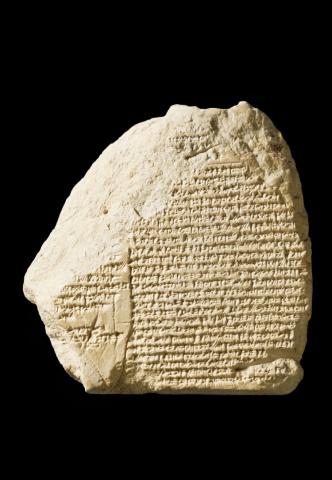
![Image for Clone of T25: Gold double-daric, “King with bow and spear”. Carradice Type 3. [Obverse]](https://www.cabinet.ox.ac.uk/sites/default/files/styles/large/public/images/sources/0045188o.jpg?itok=xU1k67fq)
